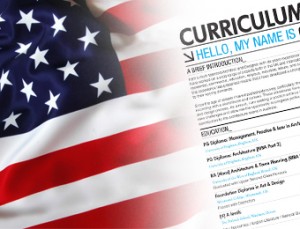There is no specific ruling about the writing of a curriculum vitae (or simply CV). Countries all over the world have different ways of creating one since there are a lot of interpretations on how the sections of a CV should be made, as well as the required length of its content. With these variations, one thing is for sure: a curriculum vitae is an important personal document that provides an overview of information on an individual’s experience and other qualifications.
Let’s talk about curriculum vitae in American usage.
In the United States of America, curriculum vitae is primarily presented when a person is applying for academic or educational, international, research, scientific, and health-related positions. It is also presented when applying for grants or fellowships. For Americans, a CV is different from a resume. Although curriculum vitae resemble a resume in many characteristics, it particularly focuses on one’s academic successes. While curriculum vitae are briefly written in United Kingdom, it is frequently written longer than resume in the U.S. For Americans, curriculum vitae must always be emphasized through its comprehensiveness rather than brevity.
Difference between American Curriculum Vitae and American Resume
In American usage, curriculum vitae contain a more in-depth synopsis of a person’s professional life as compared with the content of a resume. Additionally, curriculum vitae elaborates a summary of one’s academic or educational background, along with experiences on research and teaching, publications, fellowships and grants, awards, and honors.
It is noticeable that a resume contains fewer sections than curriculum vitae. Here is a list of the usual content of a resume: header section that contains the name and contact details, career tag, qualifications summary, areas of expertise, professional experience and key accomplishments, education, awards and honors, professional trainings, certificates, affiliations, licenses, activities, and community involvements. On the other hand, the contents of curriculum vitae include: name and address of a person, education, dissertation, fellowships and awards, areas of specialization or interests, competencies, teaching experience, research experience, publications and presentations, works in progress, related professional experience, languages, references, dissertation abstract, and miscellaneous personal details such as membership in scholarly or professional associations, study or travel, and personal interests.




